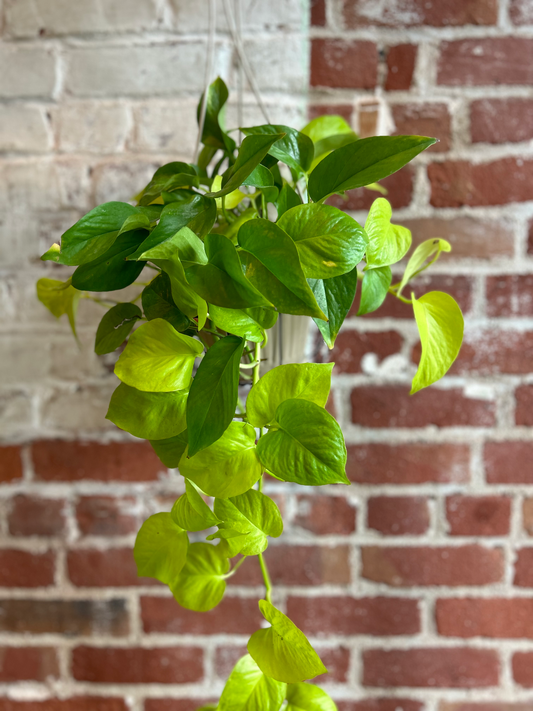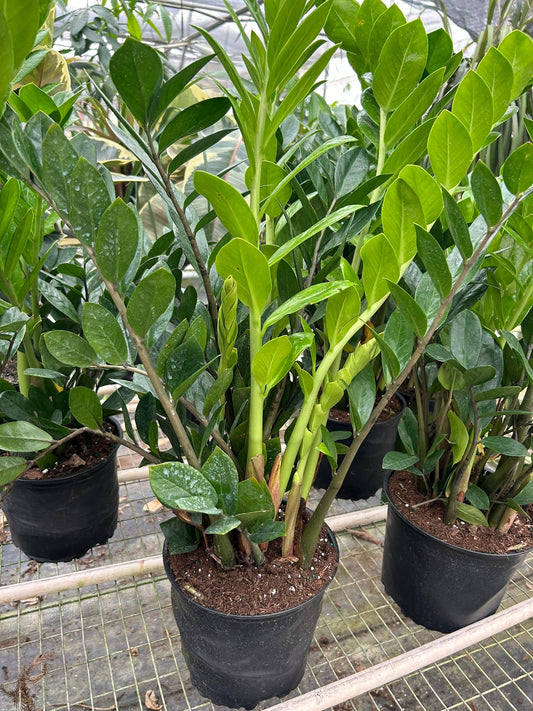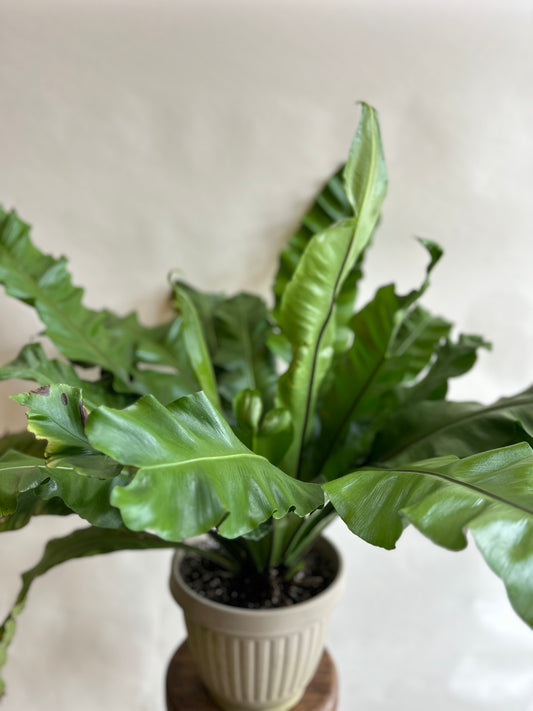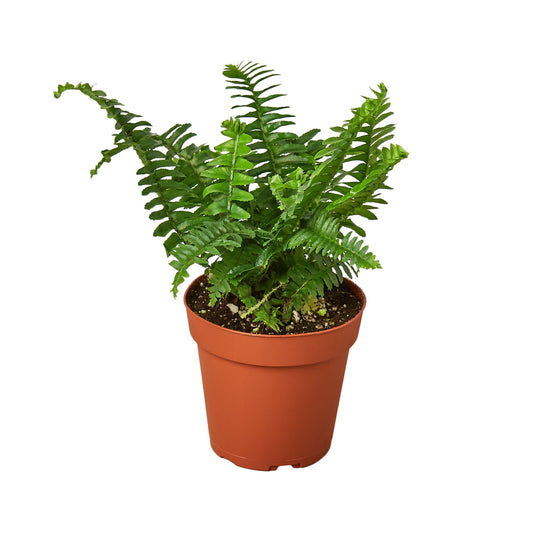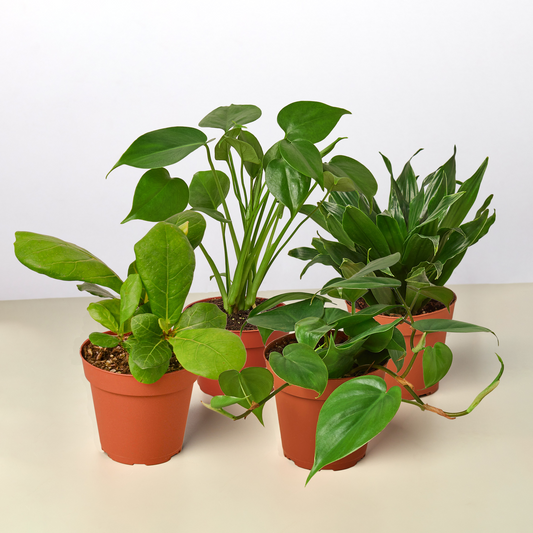Do You Need a Moss Pole For a Purple Passion Plant?
Cafe Planta Team
Bringing a Purple Passion Plant into your home is like inviting a splash of vibrant color that adds personality to any space. With its unique velvety leaves and striking purple hue, it’s no wonder this plant is a favorite among plant lovers. But as with any new green companion, questions about its care arise—especially about whether a moss pole is necessary for its growth.
In this article, we'll chat about what makes the Purple Passion Plant special, whether it truly needs a moss pole, and how to ensure it thrives in your home. We’ll also delve into various care tips and creative ways to integrate this beauty into your decor. Let’s get started!
What Makes the Purple Passion Plant Unique?
The Purple Passion Plant, scientifically known as Gynura aurantiaca, is prized for its eye-catching foliage. What sets it apart are the fuzzy, purple hairs covering its green leaves, giving them a velvety look and feel. This plant’s vibrant color can brighten up any room, and its distinctive appearance makes it a conversation starter.
Native to the tropical regions of Southeast Asia, the Purple Passion Plant thrives in warm environments. It’s a trailing plant, which means it can either drape elegantly over the sides of a pot or climb if given the right support. This adaptability allows plant parents to experiment with how they display their Purple Passion Plant.
However, with its unique beauty comes the need for specific care to maintain its vibrancy. Ensuring it gets the right light, temperature, and humidity levels is crucial. But what about structural support like a moss pole? Let’s explore this next.
To Moss Pole or Not: Does Your Purple Passion Need It?
One of the most common questions plant people have about the Purple Passion Plant is whether it requires a moss pole. The answer, interestingly enough, is not a straightforward yes or no. The decision largely depends on how you envision the plant fitting into your home and how you prefer it to grow.
If you want your Purple Passion Plant to climb or grow upwards, a moss pole could be beneficial. This kind of support allows the plant to attach itself and extend vertically, which can be a stunning way to showcase its colorful leaves. Moss poles provide the texture and moisture that climbing plants often seek out naturally, mimicking their native environments.
On the other hand, if you prefer a cascading look, you can let the plant trail over the edges of a hanging basket or a shelf. In this case, a moss pole isn’t necessary. The plant can drape beautifully, adding a flowing aesthetic to your space.
Ultimately, whether or not to use a moss pole comes down to personal preference and the desired aesthetic in your home. Both climbing and trailing Purple Passion Plants can thrive with the right care.
Setting Up a Moss Pole for Your Purple Passion Plant
If you’ve decided that a moss pole is the way to go for your Purple Passion Plant, setting one up is fairly straightforward. Here’s a simple step-by-step guide to help you get started:
- Choose the Right Moss Pole: Look for a moss pole that’s sturdy and tall enough to support your plant as it grows. They’re often available at garden centers or online.
- Prepare the Plant: Before inserting the moss pole, gently loosen the soil around your plant to avoid damaging its roots.
- Insert the Moss Pole: Push the moss pole into the soil near the base of the plant. Make sure it’s secure and won’t topple over.
- Encourage Climbing: Use plant ties or soft string to loosely attach the plant to the pole, guiding its growth upwards. Be careful not to tie too tightly, as this can damage the stems.
- Maintain Moisture: Keep the moss pole moist to encourage the plant to cling and grow. You can mist it regularly or water it with a can, ensuring it’s damp but not soggy.
With these steps, your Purple Passion Plant will have a supportive structure to help it grow beautifully upwards.
Perfect Lighting for Your Purple Passion Plant
Lighting is crucial for the health of your Purple Passion Plant. These plants love bright, indirect light. Too much direct sunlight can scorch their delicate leaves, while too little light might cause the vibrant purple color to fade.
Find a spot in your home that offers plenty of light without direct sun exposure. A north or east-facing window is often ideal, as it provides morning light that isn’t too harsh. If you notice the leaves losing their color or becoming leggy, it might be a sign that the plant needs more light.
Alternatively, if you don’t have a suitable natural light source, you can use grow lights to supplement. These are especially useful in the winter months when natural light is limited. Just be sure to position them at a safe distance to avoid overheating the plant.
Watering Wisdom: Keeping Your Plant Hydrated
When it comes to watering your Purple Passion Plant, consistency is key. These plants prefer to be kept moderately moist but not waterlogged. Overwatering can lead to root rot, while underwatering can cause the leaves to wilt.
A good rule of thumb is to water when the top inch of soil feels dry to the touch. Here’s a simple method to ensure you’re getting it right:
- Check the Soil: Stick your finger into the soil about an inch deep. If it feels dry, it’s time to water.
- Water Thoroughly: Water the plant until you see it draining out of the bottom of the pot. This ensures the roots are getting enough moisture.
- Let It Drain: Make sure your pot has drainage holes to prevent excess water from sitting in the soil.
- Adjust with Seasons: Your plant’s watering needs will change with the seasons. In winter, you might find you need to water less frequently.
With these tips, you’ll keep your Purple Passion Plant well-hydrated without the risk of overwatering.
Temperature and Humidity: Creating a Cozy Environment
Creating the right environment for your Purple Passion Plant involves paying attention to temperature and humidity. This plant thrives in temperatures between 60°F and 75°F (15°C and 24°C). Avoid placing it near drafty windows or heat sources, as sudden temperature changes can stress the plant.
Humidity is another factor to consider. The Purple Passion Plant enjoys higher humidity levels, which mimic its natural tropical environment. If your home is dry, especially during winter, consider using a humidifier or placing a tray of water near the plant to increase humidity.
Misting the plant occasionally can also help maintain moisture levels. However, be cautious not to overdo it, as excessive moisture on the leaves can lead to fungal issues.
Feeding Your Purple Passion: Fertilizing Tips
To keep your Purple Passion Plant healthy and vibrant, regular feeding is essential. Fertilizing provides the nutrients your plant needs to support its growth and maintain its vivid color.
During the growing season, which is typically spring and summer, fertilize your plant every two to four weeks with a balanced liquid fertilizer. Dilute it to half-strength to avoid over-fertilizing, which can cause salt buildup in the soil.
In the fall and winter months, you can reduce fertilizing to once a month or stop altogether, as the plant’s growth naturally slows down.
Remember, healthy soil is just as important as fertilizer. Repotting your Purple Passion Plant every couple of years with fresh potting mix can replenish the nutrients in the soil and support robust growth.
Managing Pests and Common Issues
Like any plant, the Purple Passion can encounter pests or develop issues if not properly cared for. Common pests include spider mites, aphids, and mealybugs. Here’s how you can tackle these nuisances:
- Regular Inspection: Check your plant regularly for signs of pests. Look for discolored leaves, webbing, or sticky residue.
- Natural Remedies: Use a mixture of water and mild dish soap to gently clean the leaves. Neem oil is also an effective natural pesticide.
- Isolation: If you spot pests, isolate the affected plant to prevent the spread to others.
In addition to pests, watch out for signs of overwatering or lack of light, such as yellowing leaves or leggy growth. Addressing these issues promptly will help keep your plant in top shape.
Styling Your Home with Purple Passion Plants
Beyond their care, Purple Passion Plants offer endless styling possibilities. Their vibrant color can complement various interior design styles, from bohemian to modern.
Here are a few creative ways to incorporate them into your decor:
- Hanging Baskets: Let the plant trail down from a hanging basket for a dramatic effect.
- Shelves and Ledges: Place the plant on a shelf or ledge and let it cascade down for a touch of greenery at eye level.
- Paired with Other Plants: Combine it with other plants with contrasting foliage for an intriguing display.
- Statement Pieces: Use a moss pole to create a vertical statement piece that draws the eye upwards.
With a little creativity, your Purple Passion Plant can become a stunning focal point in your home.
Final Thoughts
The Purple Passion Plant is a delight to grow, offering both beauty and intrigue with its vibrant colors and unique texture. Whether you choose to use a moss pole or let it trail freely, this plant is sure to bring joy and style to your space.
At Cafe Planta, we’re passionate about helping you care for your plants. From providing a variety of houseplants to offering plant-themed apparel, we’re here for all your plant needs. If you have any questions, feel free to email us or send us a message on Instagram. We’re excited to support you on your plant journey and help you create a beautiful, thriving plant collection in your home.


